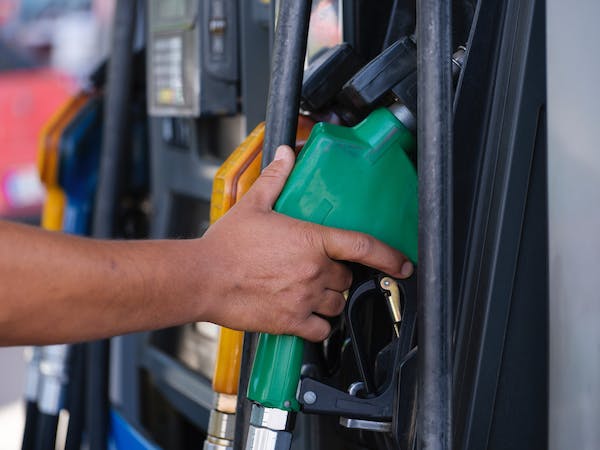What are we talking about when we compare renewable diesel, AKA biofuel, to petro-diesel, or as we mostly refer to it, diesel? It’s an important discussion as the City of Portland’s new policies, with the passage of the Fossil Fuel Terminal Zoning Amendments, lean toward boosting renewable diesel as a replacement for existing diesel fuel.
The claim: Using renewable diesel will decrease global greenhouse gasses and local air pollution.
The reality: Many factors contribute to uncertainty about the benefits of renewable fuels.
Renewable diesel is similar to petro-diesel, but not chemically identical. Renewable diesel is made of non-petroleum renewable resources (waste animal fats and vegetable oils) produced through various thermochemical processes.
This fuel is cleaner and has a lower carbon footprint than petroleum-based diesel. Lifecycle analysis, sometimes referred to as fuel cycle or well-to-wheel analysis, is used to assess the overall greenhouse gas (GHG) impacts of a fuel, including each stage of its production and use. Using renewable diesel can cut lifecycle greenhouse gas emissions up to 85% depending on what materials it is made from. Waste products such as tallow and used cooking oil have the greatest reductions while vegetable oils are slightly less. Renewable diesel lowers tailpipe emissions such as particulate matter, carbon monoxide, total hydrocarbons, and nitrogen oxide as well. For more info: https://www.epa.gov/renewable-fuel-standard-program/lifecycle-analysis-greenhouse-gas-emissions-under-renewable-fuel
However, other sources provide different emission reduction values. For example, results from a UPS vehicles study in Houston, Texas indicate that, on average, renewable diesel reduces carbon dioxide emissions by 4.2% compared to petroleum diesel: https://www.nrel.gov/transportation/fleettest-fuels-diesel.html
According to Biofuels-news, the use of biodiesel or renewable diesel in new and existing diesel engines can reduce GHG emissions by 50-85%, without the need for investments in new fueling infrastructure or vehicle technologies: https://biofuels-news.com/news/biodiesel-renewable-diesel-fuel-largest-ever-reductions-in-californias-transport-ghg-emissions
There are challenges. As renewable diesel has increased, the demand for feedstock (soybeans and canola oils) has expanded. The immediate result will be increased agricultural output and higher prices, including food prices, while the long-term solution will be to find a sufficient source of sustainable feedstocks. The refinery process produces wastewater which can have high concentrations of contaminants if residual oils are used which could overwhelm wastewater treatment facilities. The purification process in the pretreatment generates spent bleaching clay which contains contaminants and the oil it contains will degrade to methane: https://blog.veolianorthamerica.com/energy-transition-deep-dive-top-6-challenges-renewable-diesel-producers-face
Most importantly, fossil fuels are often used to produce biofuels. That fact, coupled with all-over-the-map CO2 emission reduction scenarios, indicates that renewable diesel may never reduce carbon emissions by 100%. Because the total amount of diesel is not capped, there is uncertainty about how much fossil-diesel is displaced by biodiesel. It depends on fluctuating market conditions. For example, increasing overall availability leads to lower prices and therefore increased use. Low carbon fuel standards (LCFS) are not the best way to provide incentives for electrification of transportation, and may, if anything, delay the transition toward clean electrification.
Spills, fires, local effects on fenceline communities remain serious concerns. Fenceline communities, usually with mostly BIPOC residents, live near the production facility and suffer the ill effects of the production process. Air pollution from burning biofuels remains significant. Uncertainty of climate benefit models is so great that increased use of renewable diesel could even be increasing GHG emissions at the global level. Facilities might say they plan to use one thing (waste of some kind), but then switch to a less favorable feedstock (trees or planted crops).
Other short-term policies may be better for cleaning up air pollution; for example, tightening standards and/or phasing out old diesel engines. Increasing dependence on biofuels may force a fallback to fossil fuels if war and climate change-induced extreme weather lead to a food crisis. Investing in this industry creates a new vested interest to oppose fleet electrification.
Renewable diesel appears to be popular in Oregon because policies were put in place, following California’s lead, before the intricacies were understood. Fossil fuel companies, especially large ones, prefer to rely on petro-fuels. Prices in California are high so facilities in Oregon could sell to California. There might be some role for renewable diesel (maybe long-haul trucking) at least in the short run. Jurisdictions like to be able to say they are doing something, even if that “something” is not proven to be effective. Several fleets in Oregon use renewable diesel, though most of the renewable diesel is imported and only available in limited quantities: https://www.oregon.gov/energy/energy-oregon/Pages/Renewable-Fuels.aspx
NEXT Renewable Fuels, Inc. is planning to install a renewable diesel production plant in Columbia County and is waiting for approval for an air quality permit. This is opposed by local farmers, environmentalists, and indeed XRPDX, as we have asked our members to write in opposition to this. NEXT plans to use animal tallows, waste grease, used cooking oils and seed oil (not palm oil) to produce renewable diesel. The diesel will be used as a substitute in petro-diesel trucks: https://nextrenewables.com/wp-content/uploads/2022/08/NEXT-FactSheet_Aug22.pdf
However, given the uncertainty about the benefits of renewable diesel, a skeptical voice needs to be raised and the precautionary principle applied. Renewable diesel is only a short-term solution that contains several potential negative consequences. Any policies to promote renewable diesel must encourage more research and development. Policies and individual projects must also prohibit the use of dedicated crops, the use of the facilities for fossil fuels and use the following criteria — seismic risk, noise, pollution and vulnerable populations — when siting a facility.
We will continue to track this issue.
[Photo credit: Engin Akyurt of pexels.com]

